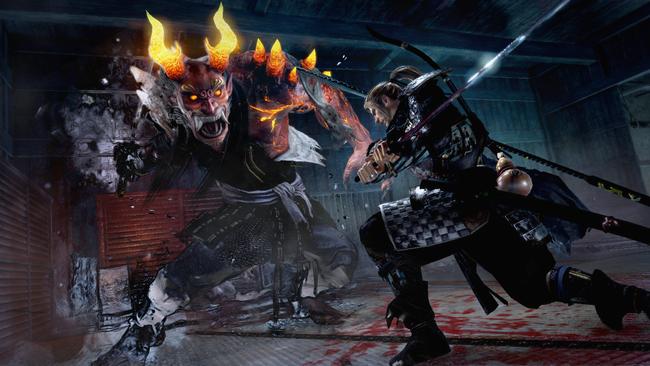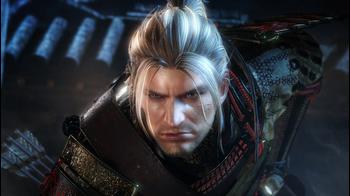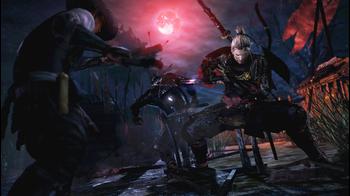
Sengoku Souls: A look at Koei's new Action RPG, Nioh
The return of Nioh has turned out to be one of my favorite little surprises of this year's Tokyo Game Show - though in truth it's a game that many might not remember. Originally announced by Koei as a PlayStation 3 exclusive at the dawn of that system's generation, the game quietly disappeared - and has only now resurfaced with a new, more modern twist to its design.
The twist is best described as Souls-esque, with the first footage of Nioh debuted at TGS somewhat resembling the measured and methodical pace of Dark Souls combat blended with the overarching world and style of the much-loved Onimusha series. The Onimusha connection is obvious - in fact, when initially announced back in 2004, Nioh was actually simply called 'Oni', which in hindsight might've been a bit on-the-nose.

Koei Tecmo didn't have Nioh playable at TGS, but fans and press were allowed to see the game in action, ushered past thick black curtains designed to prevent children from seeing the blood-soaked title into a darkened room to see a little of the game in action. What I saw left me excited and intrigued.
So, reader, how much do you like Dark Souls? If the answer is positive, chances are you're going to take an interest in Nioh, as Koei's latest is clearly heavily inspired by FROM's difficult action RPG. Layered atop that combat is the Onimusha influence, with the game's world and design distinctly Sengoku - the real world era of Japan that was the heyday of the Samurai - mixed with a heady dose of the supernatural and fantastical.
Combat is focused heavily on defense over offense, the antithesis of the constant offensive Koei's Warriors games encourage you undertake. Blocking and dodging with what looked like fairly tight timing is vital, opening up enemies to devastating counter attacks that are absolutely necessary to survive.
There appeared to be multiple types of weapon available to the player, and switching between them was simply mapped to a flick of a direction of the D-Pad.
Given the period's focus on Katana blades, the weapons shown were rather different to the typical Souls set - the sword and shield makes sense as a default in Souls' medieval Europe styled world, but shields were relatively uncommon among the samurai, and that was reflected in Nioh's TGS demo, with all the weapons shown meticulously handled two-handed beasts.
The Souls-like touches go beyond its pace and combat. Stamina dominates almost all your actions, represented by an on-screen meter, while player deaths are noted in the world by ominous death markers. There's a number of interactions atop death markers, including the ability to see how the other player died, and reaching your own death marker is a trope also carried over from Souls, except here it allows you to summon a wolf that bolsters your combat abilities for a brief time.
Initially in the demo, combat seems focused on small numbers of enemies - but later on, throngs of them become a deadly and difficult-looking challenge. The enemy design ends up being one of my favorite things about the demo, featuring a plethora of demonic beasts all in period-appropriate garb or ceremonial masks.
The game appears set to make the most of its Sengoku setting, at least based off this short demo. The demo was of course topped off by a massive, cool-looking boss with learnable, predictable attack patterns to exploit smartly.
Interestingly, the protagonist at least appears to be partially a fish out of water, with a Western-looking bent to his design. There's a little of Geralt of Rivia about him - which is unexpected from such an otherwise Japanese-looking title.
More traditional RPG mechanics also seem to follow FROM's footsteps. There's a bonfire equivalent, here traditional Japanese shrines, that must be pinged in order to cash in experience and level up. I also get the briefest glimpse at the menu, which features a fairly deep looking inventory system.
I always hate introducing a new game by comparing it to one of its peers, but with Nioh it's difficult not to. It's Dark Souls. Koei has found an interesting new twist on the idea in adjusting its setting, as with that comes changes to the types of weapons, armour and combat available - but at its core, this is Team Ninja's take on the Souls formula. Given how beloved and brilliant those games are, that's no bad thing - and I look forward to seeing more of Nioh.

